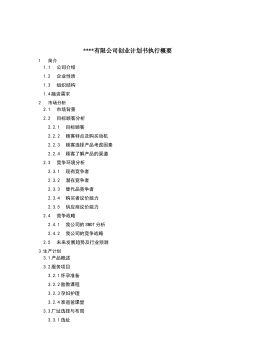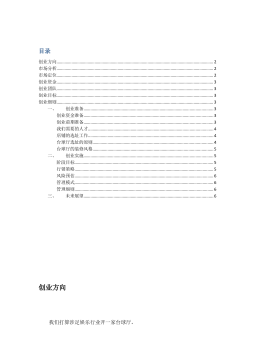解冻猪肉腐败机理及解冻及措施优化研究
VIP免费
解冻猪肉腐败机理及解冻措施优化研究
摘 要
本课题以冻结再解冻猪肉为对象,对解冻猪肉有害菌进行分离鉴定,并对不
同贮藏温度下解冻猪肉中有害菌再生长情况进行研究;将分离鉴定出的优势腐败
菌接种至表面灭菌的猪肉上,经过冻结解冻后,对不同贮藏温度下感官状态进行
评价并测定表面色差值、微生物数量、肉汁损失率、挥发性盐基氮和脂肪氧化值;
通过以上研究来探索解冻猪肉腐败机理。为了更好的保持解冻猪肉的品质,通过
对解冻措施的筛选对比,包括常规空气解冻、微波解冻、超声波解冻等,最终选
择微波解冻作为冷冻猪肉较好的解冻方法,并对微波解冻进行间歇优化,具有较
强的实际指导意义。具体研究结果如下:
第一,对解冻猪肉中初始有害菌的分析可知,假单胞菌属、热死环丝菌、肠
杆菌科和乳酸菌是解冻猪肉中的初始有害菌。通过对不同的选择性培养基上典型
菌落进行初步分离鉴定,得出假单胞菌属、热死环丝菌和肠杆菌科是解冻猪肉中
的优势有害菌。从解冻猪肉中不同贮藏温度下菌落总数与各类细菌的生长可知,
假单胞菌属与热死环丝菌增长最快,在 4℃和 0℃条件下均有不同程度的增长,肠
杆菌科在 4℃条件下增长也较快,乳酸菌数量最少,增长较慢。建议肉类工业采取
相应措施控制解冻猪肉中有害微生物的增长。
第二,对贮藏期内接种腐败菌的肉样的感官特性、表面色差、肉汁损失率、
pH 值、菌落数、TVBN 及TBA 值进行了检测,结果表明接种假单胞菌属和热死
环丝菌的肉样所得评分明显低于接种肠杆菌科细菌和对照组;4℃、0℃贮藏时接
种到肉样的特定腐败菌均有显著增长,且假单胞菌属和热死环丝菌增长较快,尤
其热死环丝菌,在贮藏期末达到最大;4℃贮藏时接种假单胞菌属和肠杆菌科肉样
TVBN 值增加很快,超过 20mg/100g,0℃时,接种热死环丝菌和假单胞菌属肉样
的TVBN 值增加较快,达到 14mg/100g 左右。本研究将 TVBN 与菌落数结合,用
TVBN 产量因子 Y(TVBN/CFU)量化表示各腐败菌的腐败能力,结果表明假单胞菌
属的腐败能力较强。对不同腐败菌造成的理化指标的变化进行比较,热死环丝菌
和假单胞菌属的腐败能力较强,肠杆菌科在 4℃导致腐败也比较快。
第三,针对不同解冻方式对解冻肉品质的影响,选取宰后 48h 的新鲜猪精腿
肉冻结后进行解冻措施的筛选和优化。结果表明微波解冻较空气解冻和超声波解
冻更能保证解冻猪肉的品质;对微波解冻进行了 20℃、25℃和 30℃温度和间歇工
艺的优化,得出微波解冻以 25℃处理 10min 后间歇 10min 交替进行能够较好的解
决肉汁损失率和部分过热问题,且微生物的数量、色泽、嫩度、挥发性盐基氮
(TVBN)值等品质指标比优化前均有所改进。
通过以上研究表明,假单胞菌和热死环丝菌是解冻猪肉中的优势腐败菌,致
腐能力最强,解冻方法筛选和优化结果表明间歇优化的微波解冻能更好的保持解
冻猪肉的品质。本研究丰富了肉类微生物腐败的基础理论研究,对肉类工业有一
定的指导意义。
关键词:解冻猪肉 有害菌 腐败 微波 优化
Study on Spoilage of Thawed Pork and Optimization of
Thawing Methods
ABSTRACT
Separation and identification of harmful bacteria and its regrowth in thawed pork
were studied in this research. Then the specific spoilage organisms were inoculated into
thawed pork at different storage temperatures (4℃, 0℃and -5℃, respectivley).
Sensory evaluation score, chromatic value, aerobic bacteria count, drip loss, total
volatile basic nitrogen (TVB-N) value and thio-barbituric acid (TBA) value were
detected, respectively, at each storage day. The aim of above research was to explore the
mechanism of spoilage on thawed pork. Meanwhile, in order to keep the high quality of
thawed pork, methods of thawing, such as air thawing, microwave thawing and
ultrasonic thawing, were selected and compared in this paper. The result indicated that
microwave thawing was a better one among these methods. And then further
optimization was applied for the microwave thawing, which could be practice reference
for meat industry. The results were showed as follows:
Firstly, it indicated that Pseudomonas spp., Brochothrix thermosphacta,
Enterbacteriaceae and lactobacillus were initial harmful bacteria of thawed pork
through analysis of harmful bacteria of thawed pork. Pseudomonas spp.,B.
thermosphacta, Enterbacteriaceae were dominating ones among the initial harmful
bacteria. From the analysis of total plate count and the regrowth of harmful bacteria, it
showed that Pseudomonas spp. and B. thermosphacta grew faster than others, with
more colony forming units (CFU) observed. Enterbacteriaceae grew fast at 4℃storage.
Furthermore, the amount of lactobacillus was the least and grew slowest among the
detected bacteria. As a conclusion, appropriate measure would be adopted to control the
growing of microorganism in thawed pork in meat industry.
Secondly, different parameters of thawed pork, which inoculated by specific
spoilage organism during storage, were detected, including sensory evaluation,
chromatic value, drip loss, pH value, amount of colony, TVB-N and TBA. The results
indicated that the scores of thawed pork which inoculated by Pseudomonas spp. and B.
thermosphacta were lower than by Enterbacteriaceae and control; the specific spoilage
organism grew observably during the storage at 4℃and 0℃, and Pseudomonas spp.
and B. thermosphacta grew faster, especially B. thermosphacta with highest amount at
the end of storage; The results of TVB-N value showed that the samples which
inoculated by Pseudomonas spp. and Enterbacteriaceae increased fast, and the value
was exceed 20mg/100g at 4℃storage, while the samples by Pseudomonas spp. and B.
thermosphacta was approximately 14mg/100g also with higher increase tendency. The
Y value which to combine TVBN and total plate count, was selected as the index of
spoilage ability in this paper. The results indicated that the Y value of sample with
Pseudomonas spp. was the higher one than other treatments. Furthermore, the spoilage
ability of samples by Pseudomonas spp. and B. thermosphacta was found to be the
more significant ones compared with other groups, and Enterbacteriaceae treatment be
the fast t at 4℃storage.
Thirdly, effect of different thawing methods on the quality of frozen pork was
studied, and pork after slaughtered for 48 h was selected in the further study of thawing
optimization. The results indicated that microwave thawing was better than air thawing
and ultrasonic thawing in keeping the quality of thawed pork; the optimization of
temperature covered 20℃, 25℃, 30℃and intermittent technology. It showed that the
thawed pork quality might be improved by keeping microwave thawing 10 minutes and
intermittent 10 minutes at 25℃, and the total bacterial count, color, tenderness, TVB-N,
etc. were improved than before.
In conclusion, this paper indicated that Pseudomonas spp. and B. thermosphacta
were dominating ones among the initial harmful bacteria and their spoilage ability was
significant. Moreover, results of comparsion and optimization of thawing methods
showed that intermittent microwave thawing was better than other methods in keeping
the quality of thawed pork. This study might be a supplement for basic theory of
microorganism and significance for meat industry.
Key Words: thawed pork, harmful bacteria, spoilage, microwave
thawing, optimization
目 录
摘 要
ABSTRACT
第一章 绪 论 ...................................................................................................................1
§1.1 解冻猪肉腐败机理研究进展 ..................................................................................1
§1.1.1 肉类消费现状及腐败变质 .............................................................................1
§1.1.2 猪肉中的有害菌 .............................................................................................2
§1.1.3 猪肉中有害菌的特性 ....................................................................................5
§1.2 冻结猪肉的解冻方法概述 ......................................................................................7
§1.2.1 外部加热解冻 ................................................................................................7
§1.2.2 内部加热解冻 ................................................................................................8
§1.2.3 利用微能解冻 ..............................................................................................14
§1.2.4 新型解冻方法 ..............................................................................................17
§1.3 立题意义 ................................................................................................................18
§1.4 研究内容 ................................................................................................................19
第二章 解冻猪肉有害菌鉴定及再生长 .......................................................................21
§2.1 引言 ........................................................................................................................21
§2.2 材料与方法 .............................................................................................................21
§2.2.1 样品 ..............................................................................................................21
§2.2.2 培养基与试剂 ..............................................................................................21
§2.2.3 仪器与设备 ..................................................................................................21
§2.2.4 解冻猪肉的初始有害菌计数 ......................................................................22
§2.2.5 有害菌的分离及初步鉴定 ..........................................................................22
§2.2.6 不同温度贮藏下解冻猪肉的有害菌再生长 ..............................................22
§2.2.7 数据处理与分析 ..........................................................................................22
§2.3 结果与分析 ............................................................................................................22
§2.3.1 解冻猪肉中初始有害菌分析 ......................................................................22
§2.3.2 解冻猪肉中有害菌的初步鉴定 ..................................................................23
§2.3.3 不同贮藏温度下解冻猪肉有害菌在生长 ...................................................24
§2.4 本章小结 ................................................................................................................27
第三章 解冻猪肉优势腐败菌致腐能力研究 ...............................................................28
§3.1 引言 ........................................................................................................................28
§3.2 材料与方法 ............................................................................................................28
§3.2.1 实验器材 ......................................................................................................28
§3.2.2 实验方法 ......................................................................................................29
§3.2.3 测定指标 ......................................................................................................29
§3.3 结果与分析 ............................................................................................................30
§3.3.1 贮藏中感官变化 ..........................................................................................30
§3.3.2 贮藏中色差值变化 ......................................................................................32
§3.3.3 贮藏中 pH 值变化 .......................................................................................36
§3.3.4 贮藏中肉汁损失率变化 ..............................................................................38
§3.3.5 贮藏中优势腐败菌菌数变化 ......................................................................40
§3.3.6 贮藏中 TVBN 值变化 .................................................................................41
§3.3.7 藏中 TBA 值变化 ........................................................................................43
§3.3.8 贮藏中各腐败菌腐败能力定量分析 ..........................................................44
§3.4 讨论 ........................................................................................................................45
§3.5 本章小结 ................................................................................................................45
第四章 冻结猪肉解冻措施筛选及优化研究 ...............................................................47
§4.1 引言 ........................................................................................................................47
§4.2 材料与方法 ............................................................................................................47
§4.2.1 样品准备 ......................................................................................................47
§4.2.2 试剂与仪器 ..................................................................................................47
§4.2.3 解冻措施对解冻猪肉品质的影响 ..............................................................48
§4.2.4 冻结肉微波解冻温度的优化 ......................................................................48
§4.2.5 冻结肉微波解冻间歇时间的优化 ..............................................................48
§4.2.6 数据处理与分析 ..........................................................................................48
§4.3 结果与分析 ............................................................................................................48
§4.3.1 解冻措施对解冻猪肉品质的影响 ...............................................................48
§4.3.2 不同温度条件下微波解冻对解冻猪肉品质的影响 ..................................52
§4.3.3 不同间歇时间的微波解冻处理对解冻猪肉品质的影响 ..........................54
§4.4 本章小结 ................................................................................................................55
第五章 结论与展望 .......................................................................................................56
§5.1 研究结论 ................................................................................................................56
§5.2 展望 ........................................................................................................................57
参考文献 .........................................................................................................................58
在读期间公开发表的论文和承担科研项目及取得成果 .............................................64
致 谢 .............................................................................................................................65
摘要:
展开>>
收起<<
解冻猪肉腐败机理及解冻措施优化研究摘要本课题以冻结再解冻猪肉为对象,对解冻猪肉有害菌进行分离鉴定,并对不同贮藏温度下解冻猪肉中有害菌再生长情况进行研究;将分离鉴定出的优势腐败菌接种至表面灭菌的猪肉上,经过冻结解冻后,对不同贮藏温度下感官状态进行评价并测定表面色差值、微生物数量、肉汁损失率、挥发性盐基氮和脂肪氧化值;通过以上研究来探索解冻猪肉腐败机理。为了更好的保持解冻猪肉的品质,通过对解冻措施的筛选对比,包括常规空气解冻、微波解冻、超声波解冻等,最终选择微波解冻作为冷冻猪肉较好的解冻方法,并对微波解冻进行间歇优化,具有较强的实际指导意义。具体研究结果如下:第一,对解冻猪肉中初始有害菌的分析可知...
相关推荐
-
跨境电商商业计划书模版VIP免费
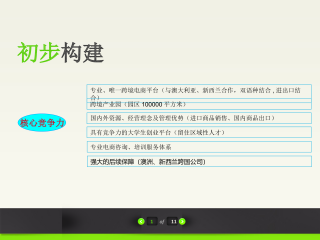
 2025-01-09 27
2025-01-09 27 -
跨境电商方案范文VIP免费
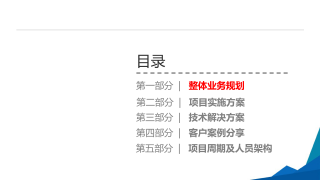
 2025-01-09 14
2025-01-09 14 -
创业计划书VIP免费
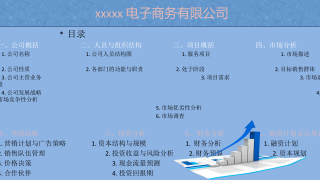
 2025-01-09 18
2025-01-09 18 -
xx生鲜APP计划书VIP免费

 2025-01-09 12
2025-01-09 12 -
跨境电商创业园商业计划书(盈利模式)VIP免费
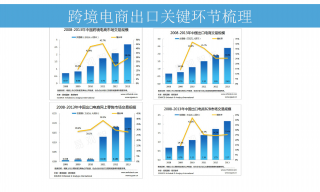
 2025-01-09 8
2025-01-09 8 -
跨境电商计划书VIP免费
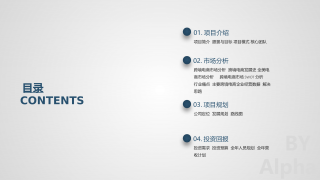
 2025-01-09 13
2025-01-09 13 -
绿色食品电商平台项目计划书VIP免费

 2025-01-09 22
2025-01-09 22 -
农产品电子商务商业计划书VIP免费
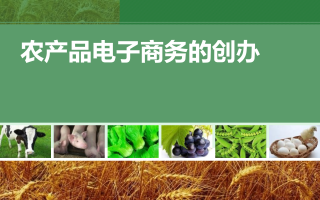
 2025-01-09 9
2025-01-09 9 -
农村电商平台商业计划书VIP免费
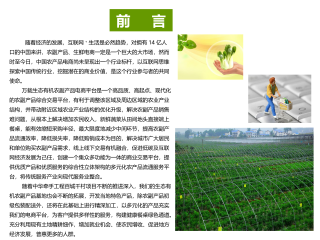
 2025-01-09 13
2025-01-09 13 -
生鲜商城平台商业计划书VIP免费
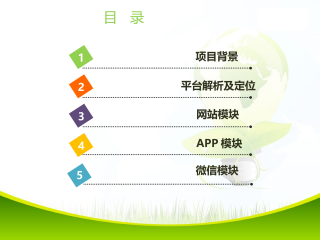
 2025-01-09 21
2025-01-09 21
作者:牛悦
分类:高等教育资料
价格:15积分
属性:70 页
大小:1.25MB
格式:PDF
时间:2024-11-19


